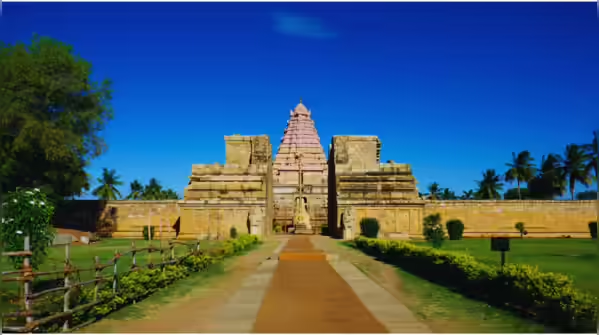New Delhi – India’s heritage portfolio dazzles with 42 UNESCO World Heritage Sites, yet many of its most meaningful treasures remain quietly tucked away, overshadowed by the fame of the Taj Mahal, Hampi, and Khajuraho. But beyond the tourist magnets lie places that whisper rather than shout—monuments that tell stories of time, resilience, and soul. Here are eight such UNESCO sites that deserve more than a passing mention—they deserve deep appreciation.
Champaner-Pavagadh Archaeological Park, Gujarat
Woven into Gujarat’s vibrant landscape lies a palimpsest of civilizations. At Champaner-Pavagadh, a former 16th-century capital, time stands still amidst prehistoric remains, Islamic mosques, and Hindu temples. The Kalikamata Temple, still a living place of worship, crowns Pavagadh Hill, serving as a spiritual and historical beacon across millennia.
Great Living Chola Temples, Tamil Nadu
With their towering vimanas and sculptural detail, the Great Living Chola Temples—Brihadisvara, Gangaikondacholisvaram, and Airavatesvara—are monuments not just to kings, but to human ambition and divine artistry. These 11th–12th century sanctuaries showcase the Chola dynasty’s golden age, where bronze met devotion, and stone sang praises to precision.
Kakatiya Rudreshwara (Ramappa) Temple, Telangana
Built over four decades in the early 13th century, the Ramappa Temple is a marvel of engineering and devotion. Its famed floating bricks and star-shaped sanctum reflect a harmonious balance between architectural ingenuity and sacred purpose. Surrounded by lush landscapes, it’s a temple where silence resonates louder than spectacle.
Rani ki Vav, Gujarat
Descending into the intricately carved chambers of Rani ki Vav is like stepping into a sculptural dream. Built in the 11th century as an inverted temple and a functional stepwell, its seven-tiered descent is adorned with over 1,500 sculptures—each a quiet testament to myth, water wisdom, and the elegance of the Maru-Gurjara tradition.
Bhimbetka Rock Shelters, Madhya Pradesh
Long before written words, there were pictures—etched into stone by early humans in the Bhimbetka Rock Shelters. These ancient dwellings, dating back over 10,000 years, house scenes of hunting, dancing, and celebration, proving that creativity and community are as old as time itself.
Churches and Convents of Goa
Echoes of Renaissance devotion and Baroque elegance rise from the churches and convents of Old Goa. These monuments—such as the Bom Jesus Basilica—don’t just narrate colonial histories; they also celebrate the intermingling of Portuguese aesthetics and Indian sensibilities, creating a spiritual dialogue that transcends continents.
Mahabodhi Temple Complex, Bihar
Where does one find Enlightenment? For Buddhists worldwide, the answer lies beneath the Bodhi Tree in Bodh Gaya. The Mahabodhi Temple, serene yet monumental, marks the spot where Siddhartha Gautama became the Buddha. The layered serenity of this site speaks not just of architecture, but of awakening.
Victorian Gothic and Art Deco Ensembles, Mumbai
Along Mumbai’s Oval Maidan, two worlds meet. On one side, Victorian Gothic buildings rise with ornate facades and colonial grace. On the other, Art Deco marvels shimmer with geometric flair and Indian motifs. Together, they chronicle a city’s evolution—its colonial past, modern aspirations, and cultural blending—all written in stone and stucco.
These eight places may not trend on travel reels, but they offer something far more lasting: a deep, quiet awe. For those willing to look beyond the usual, India’s lesser-known UNESCO sites are an invitation to rediscover beauty in nuance, and to honor heritage not for its popularity, but for its profound presence.











